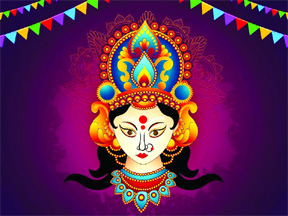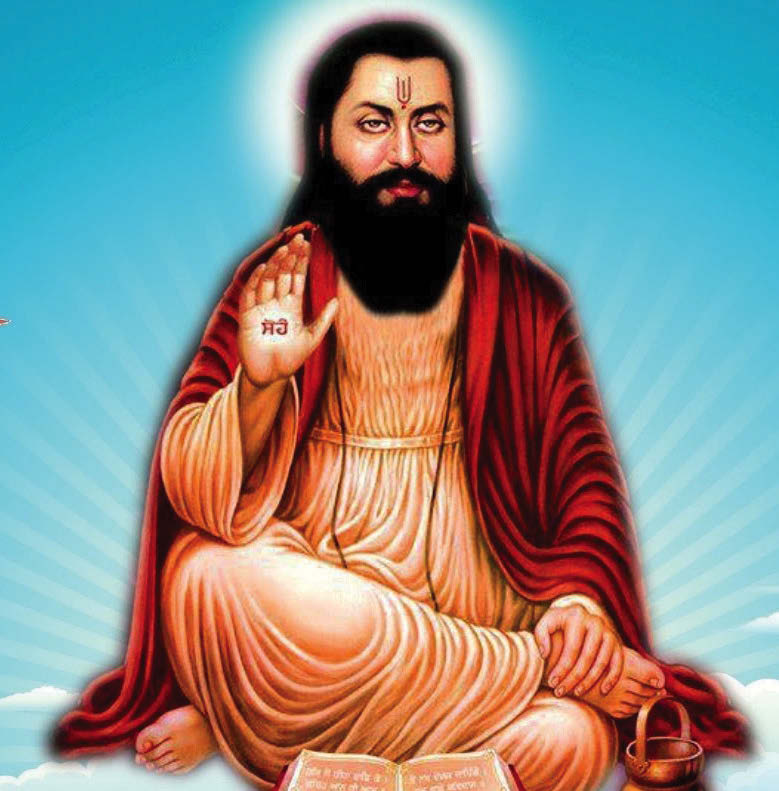
The nine-day Shardiya, or Shrad Navratri, is an important Hindu festival observed across India. It is devoted to the nine forms of Goddess Durga.
Shardiya Navratri is commemorated in the Hindu month of Ashwin, which often falls between September and October on the Gregorian calendar.
Out of the four Navratris—Magha (winter), Chaitra (spring), Ashadha (monsoon), and Sharad or Shardiya (autumn), it is regarded as the most significant, which is why it is also known as Maha Navratri. The nine-day Shardiya, also known as Shrad Navratri, occurs in the lunar month of Ashwin during Sharad Ritu, and it concludes on the tenth day with Dussehra or Vijaya Dashami.
It celebrates the killing of Mahishasura, a demon, by Goddess Durga after a long battle of nine days that culminated on the 10th day as Vijayadashami, which is why she is famously called Mahishasuramardini, or the slayer of Mahishasur.
Additionally, the 10th day of Navratri is celebrated as Vijayadashami, the day Lord Rama won the battle against Ravana and recovered Goddess Sita.
This year in 2024, Navratri will start on Thursday, October 2, at 12:18 pm, and conclude on October 4 at 02.58 am. The festival also signifies righteousness and the power of good to triumph over evil, teaching moral values like bravery and virtue.
People observe fasting during the nine days or on the first two or last two days, while some keep it for all nine days. Starting on the Pratipada of Shukla Paksha in the month of Ashwin, devotees of Goddess Durga fast and worship her for nine days, reciting the Durga Stotra and Durga Chalisa, with a belief that worshipping Durga with devotion will grant wishes.
Each day of Navratri has a distinct Durga avatar, such as Shailaputri, Brahmacharini, or Chandraghanta. The festival is also considered a harvest festival, praising the Goddess as the motherly power behind life and creation.
The festival is associated with their symbolic connotation as epitome of courage, wealth and skill respectively. Broadly, on the first three days, devotees venerate Goddess Durga as she represents power in its divine form that removes negativity and proclivity towards immoral behavior. She is, invoked as Kumari, Parvati and Kali which are aspects of Ma Durga and represent her adolescence-to-maturity stage. During the next three days, Goddess Lakshmi blessings for material and spiritual prosperity are sought with puja and powerful mantra chantings. Over the next three days, Goddess Saraswati is invoked to seek blessings for erudition and skills in the arts. The devotee puts books and musical instruments near the deity to acquire true knowledge and wisdom to see him/her through this life and beyond. The ninth day of ‘Mahanavami’ , the concluding day of Navratri puja, is considered an auspicious day for conducting pujas such as ‘Aparajita’ puja and ‘Kanya Puja’. The tenth day celebrates the momentous events associated with Lord Rama as well as Ma Durga, who killed the demon ‘Mahisasura’.
Rituals of Navratri
Customs of Navratri which stand out prominently in terms of strict observance include the following:
On the very first day, barley or ‘jowar’ seeds are sown in a decorated clay pot and by the tenth day, the tender shoots are distributed among the devotees. A photograph or an idol of the eight-armed Goddess seated on a lion, along with the ‘yantra’ is installed.
‘Kalash Sthapna’ is done which involves installing a water pot or ‘kalash’, sprinkled with holy water and filled with mango leaves and coconut.The morning ‘puja’ is performed after a bath, and the day-long fast is broken after doing the evening puja.
During the puja, ‘shankh’ is blown, fresh flowers, ‘doob’ or sacred grass, ‘paan’ and fruits are offered to the deity, chapters from the sacred ‘Durga Saptshati’ and ‘Chandipath’ are recited, followed by ‘arti’ and prasad distribution.A very significant ritual is performing ‘Kanya Puja’ on ‘Ashtami’ and ‘Navami’, which involves worshipping nine young girls, in pre-puberty stage, representing the nine forms of goddess Durga. Each girl is treated to a meal comprising puri, sweet bread, halwa, a sweet dish, made of semolina and Bengal gram curry. After washing their feet, the devotees break their fast.
Ayudha or Astra Puja is held on the eighth/ninth day. Tools, vehicles and equipments are worshipped on this day. Among some communities, it is also considered an auspicious time to initiate learning for children by invoking Goddess Saraswati. Hence, Lalita-puja and Saraswati-puja is done ritualistically to start formal education of children.A Garba performance precedes ‘aarti’ conducted in honor of Maa Durga.Fasting or ‘vrat’ from sunrise till sunset is undertaken for night days.In the Navratri Hindu festival, the devotee should observe abstinence and austerity. On the eight day, a ‘yagna’ is performed with offerings of ghee and til for mental and spiritual cleansing.
Lemon or bhasma or ash is used for cleaning substances for ‘abhishek’.In Gujarat, a garbh-deep or a lamp is lit within an earthen pot with several perforations representing the unison of body and soul.
Customs of Navratri
Since all the nine days are dedicated to different incarnations of Ma Durga, it is customary to wear colors that symbolize the qualities of the deity. The first day venerates Shailputri Devi who embodies aspects of Brahma, Vishnu and Shiva. On this day, red clothes are worn. The second day is dedicated to Brahmacharini Devi who represents a life of abstinence. Wearing blue colored clothes is considered auspicious on this day. On the third day, Chandraghanta Devi, the bestower of glory and beauty, is invoked. On the fourth day, Kushmanda Devi is worshipped and yellow is the color to honor her. The fifth day is in honor of Skandmata Devi. Grey is the color to be worn on the sixth day and is dedicated to Katyayani Devi, while orange is the color for protection symbolized by Kalratri Devi on the seventh day. On the eighth day, pink clothes are worn to honor Mahagauri Devi. The ninth day is dedicated to Siddhidatri Devi, whose blessings earn devotees all ‘siddhis’.
On all these nine days, devotees should meditate on the different forms of Ma Durga and seek her grace.





Be the first to comment